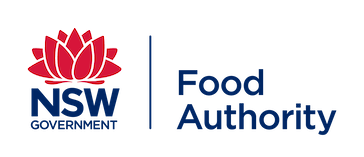Recreational harvest of seafood
Many people enjoy recreational catching or collecting shellfish or bivalve molluscs such as mussels, oysters, pipis, and cockles; crustacea such as yabbies, prawns and crayfish; and finfish.
There are some important tips to follow to enjoy your harvest and avoid causing illness.
Safety tips
Like all fresh food from animals, seafood needs to be handled well to minimise the risk of food poisoning. Important tips for recreationally caught or collected seafood include:
- only catch or collect seafood when water quality is good. Remember that water quality changes and not all harmful things can be seen with the naked eye. Check the current waterway status for:
- known algal ‘red alerts’ via signs, local media and NSW Office of Water website (includes alert definitions) or telephone 1800 999 457. To report a new algal bloom, phone the Environment Hotline 131 555
- fishing closures issued by NSW Department of Primary Industries via its website or telephone 1300 550 474
- keep fresh seafood cold and covered by putting in ice or a refrigerator straight away
- keep equipment clean using uncontaminated water
- don’t let recreational seafood or bait drip onto other food
- always thoroughly cook recreational seafood. Never eat it raw.
Cooking seafood will not kill toxins
It is important to remember that boiling will not destroy or remove toxins which might be present in seafood from poor quality waters.
Eating seafood contaminated with toxins may result in serious illness or death.
Things to avoid
Pipis, cockles
At any time, do not collect pipis in NSW for human consumption because it is prohibited. Collection of cockles is also not recommended.
Pipis and cockles may contain toxins unless specially purified.
‘Red alert’ algal warnings and visible blooms
Some algae produce harmful toxins that can build up in marine and freshwater shellfish, brackish and freshwater crustacea, the gut and, to a lesser extent, the flesh of freshwater finfish.
Do not collect shellfish, fresh- or brackish water crustacea such as yabbies or freshwater crayfish.
Clean and rinse freshwater finfish thoroughly in uncontaminated water and dispose of internal organs before consumption as they are likely to contain toxin. The toxin could also be present in the flesh.
Algal blooms can appear as water discolouration including red, green, yellow, brownish or an oily or milky appearance. Scum may form on the water surface. The water may have a musty, earthy or pungent smell. Other blooms are not visible but are highly toxic even at low levels.
See: Blue-green algae blooms: risks to fishers
Fishing closures issued by NSW Department of Primary Industries
Some waterways have been contaminated by industrial pollution and are not suitable for catching or collecting seafood.
Sewage spills are especially high risk for shellfish. Sewage spills sometimes contaminate waters with harmful bacteria and viruses.
Do not take seafood listed in the closure notice. For example:
- it is prohibited to collect shellfish from Sydney Harbour. Recreational fishing is not closed but eating Harbour fish should be limited.
Raw shellfish
Shellfish collected by recreational fishers should never be eaten raw. They are not subject to the same strict food safety controls as commercially harvested shellfish.
The NSW Food Authority recommends eating shellfish harvested only under a recognised commercial program.
Commercial harvest safety programs
In NSW, commercially harvested shellfish produced by oyster and mussel farmers and fishers collecting shellfish, such as pipis, must comply with a comprehensive food safety program.
The industry closely monitors algal levels, tests water and shellfish product and does not harvest when levels reach alert levels.
This program is controlled through the NSW Shellfish Program administered by the NSW Food Authority. This program assists commercial shellfish harvesters to control risks associated with harmful substances in shellfish.
